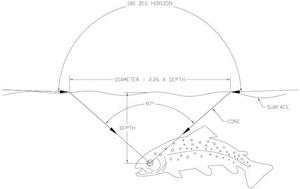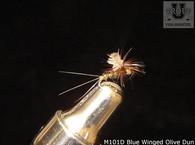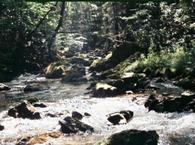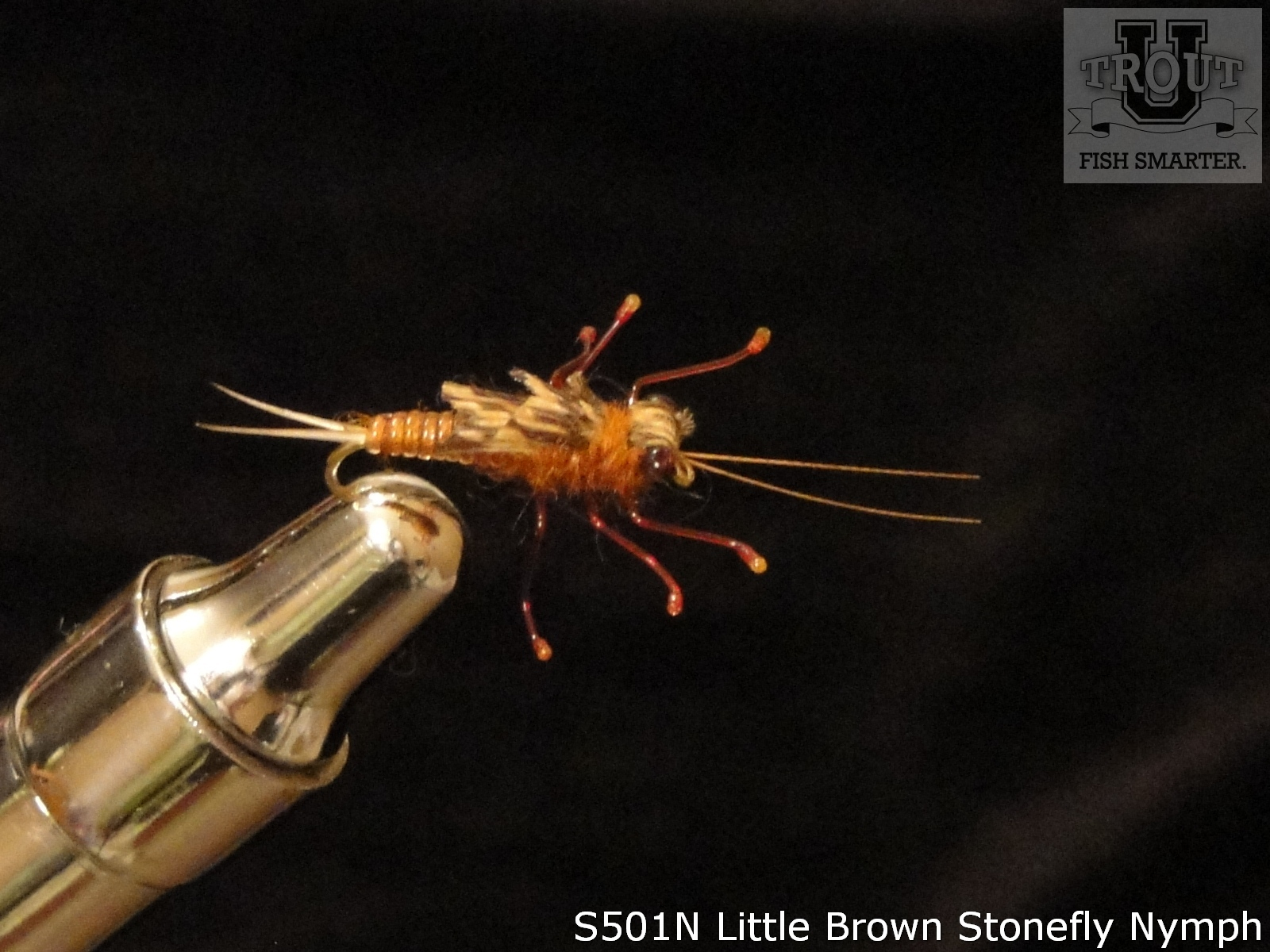
Do you ever wonder why trout will take a certain fly one time and not another? Why will an attractor pattern sometimes work, and sometimes it doesn't? To answer these questions, we're going to metaphorically don our trout vision goggles, i.e. looking at flies through a trout's eyes by examining the trout's behavior and senses. One of the key points we will discover along the way is that you will be more successful fishing with specific imitations than with using generic or attractor flies. Specific imitations are those fly patterns that represent a specific species of insect at a specific stage in its life cycle, vs. generic flies, which represent a broad range of insects.
Some Basics - Trout Learning
Though trout may have very small brains, they are able to learn experientially. However, they depend on their instincts and senses, rather than on some sort of analytical intelligence. In other words, from the time they are fry, trout begin “learning” in Pavlovian fashion what items in the stream they should eat, and which ones they should let drift by. Consequently, flies that most specifically resemble the insects the trout are feeding on produce the best results for the fly fisherman.
Feeding Zones
The ideal scenario for a feeding trout is to position itself in slow or moderate current, holding itself in place with minimal energy expenditure, and to have good access to food. This allows the trout to ingest more calories in the food they grab than they expend fighting current. Good positions for the trout include along the stream bottom, behind large rocks, boulders, logs, etc., or just outside of the main current in a slower current. Trout in these areas, so long as they are close to where the food is drifting along, will be able to spend the majority of their time in a low energy state, darting out to ambush a morsel periodically.
Often, currents concentrate insects in drift lines as the insects are carried downstream. Trout take advantage of these drift lines, by positioning themselves nearby in an area of slower moving water (as mentioned above), and being sure that they are able to see what is coming down the drift lines.
Note that certain types of insects will be found in specific types of water/areas of the stream. Therefore, for optimal success while fishing, you should not only use flies that specifically imitate the insects, but you should also fish these flies in the areas of the stream in which the corresponding insects are found.
This is why Troutprostore.com offers specific insect patterns with detailed information on how to fish them. Notice, for example, the level of detail of the stonefly nymph below.
Seeing underwater sources of food, such as larvae, pupae, and nymphs in the drift lines depends on water clarity, current, lighting, and background. Trout in clear, well-lit water should be able to notice food items several feet away. Seeing objects above the water, or floating on the surface of the water, is much more complicated. Just think of looking around underwater in a swimming pool. The objects in the pool are probably all visible from a single location in the pool. Objects outside of the water are not quite so easy. These objects must be located in what is known as the window of vision
Signup for our email list to continue reading this three part series.







